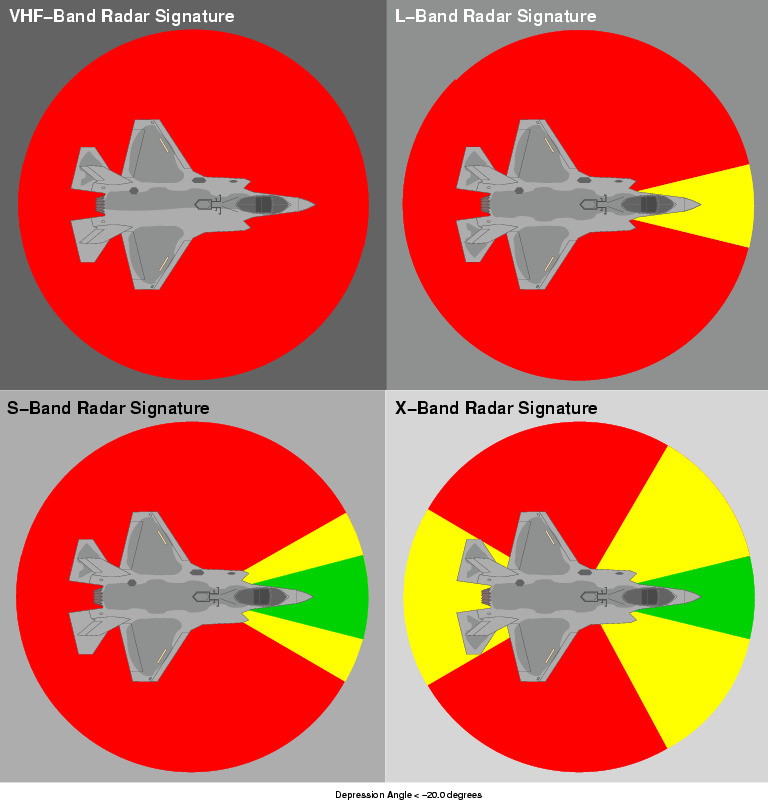Perhaps I can help, Bevo. Global Security and Air Power Australia made the point between them quite well in that the F-35 has a frontal RCS in the region of 0.0015m2,which is comparable to the B-2A. However, the RCS increases away from the head aspect - largely due to the aircraft shape, a problem not shared by the B-2A. F-35 LO design is optimized in the X and S-bands while Russian (post-Soviet) and Chinese designed IADS have been moving into L-band, UHF and VHF. The F-35 design strategy is consistent with defeating mobile battlefield short range point defence SAM and AAA systems such as -8 Gecko, SA-9, Chapparel, Crotale, Roland, SA-15, SA-19 and SA-22.
The massive increase in power output of engagement radars means agreater ability to track LO platforms off the head aspect in the X and S-bands.
Paraphrased assessment:
JSF can provide genuinely good stealth performance only in a fairly narrow ~29° sector about the aircraft’s nose, where the shaping of the nose, engine inlets, panel edge serrations, and alignment of the leading and trailing edges of the wings and stabilators results in the absence of major spikes in the radar signature. The ±14.5° angular limit is constrained by the principal reflecting lobe of the leading and trailing edges of the wings and stabilators. The signature degrades rapidly due to the influence of the lower centre fuselage as the angle swings past ±45° off the nose.
The beam aspect RCS is especially problematic, due to the presence of multiple specular reflecting shapes, specifically due to singly and doubly curved lower fuselage surface feature shaping. The Joint Strike Fighter has a complex lower fuselage shape as well as a wing and fuselage lower join shape, unlike any other aircraft designed with stealth in mind. The result of this design is that the beam aspect RCS will be closer in magnitude to a conventional fighter flown clean than a classical stealth aircraft. This is an inevitable result of clustering no less than nine unique convex specular scattering shapes in the lower hemisphere of the aircraft.
The aft sector RCS is also problematic, as a result of the use of an axisymmetric nozzle design. While the aft fuselage and tailboom shaping qualify as stealthy across the upper bands, the nozzle presents as a specular reflector in bands where the wavelength is comparable or exceeds the dimensions of the nozzle segments.
These are from unclassified sources doing analysis on highly classified issues.
A picture paints a thousand words. Here are 4,000 words for you.

Last edited by Courtney Mil; 16th May 2013 at 09:33.